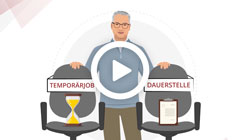Change, Change, Change….But How?
Boosting career transition advice and more (Author: Diana Bocskai Stäger)
 When hearing about change, the concept of inertia comes to mind. Imagine a hockey puck and the level of force it takes to make it move initially. Then imagine the level of force it takes to stop one that’s coming fast. Contrast both of those scenarios to the effort it takes to keep a puck moving or to keep it still. Therein lies the difficulty of change. Well, human behaviour is not too much different.
When hearing about change, the concept of inertia comes to mind. Imagine a hockey puck and the level of force it takes to make it move initially. Then imagine the level of force it takes to stop one that’s coming fast. Contrast both of those scenarios to the effort it takes to keep a puck moving or to keep it still. Therein lies the difficulty of change. Well, human behaviour is not too much different.
As a social psychologist, I was always highly concerned about change in all aspcets of life and how it impacts the individuals behaviour, norms and beliefs in society. In our modern and fast-paced world, change became one oft the challenges we have to face in different environment and every day. Change is described as the adjustment in the basic structures of a social group or society. The forms vary and change is an ever-present phenomenon in social life.
Why is change so inconvenient?
This is a deep question and one I don’t have an immediate, fast-and-short answer to. I can, however, talk about the basics of one theory on the psychology of change and what is necessary for behavioral change to occur on an individual level in business environment in particular career transition.
Managers often reorganize at almost every level. Whether triggered by a leadership transition, a fundamental change in the business, an acquisition, or poor performance ; lines, boxes, and people tend to move around. In fact it’s highly unusual to find an organization that has not shifted its structure in some way within the previous six months. But while managers engineer reorganizations, most managers (and their people) hate to be reorganized. Much like silence before the strom structural changes provoke anxiety. These are the circumstances my clients are in and I feel fully committed to be on their side to support them on their way to solution. It is not asked, if they are ready for a career change, and often they have no idea what else they could do – or where to start.
How you react to change ?
Your level of openness predicts your habits, endencies and how you coping with change. Behaviour depends on two things: intention and ability. It’s kind of a given that you have to have ability first. So then it seems that intentions should have a direct correlation with behavior. The more strongly you intend to do something, the more likely you should be able to accomplish it. Not quite. The thing is, in our minds there is no difference between actual inability to change versus perceived inability to change. That’s right, the “if you don’t think you can do it, you can’t” adage has a scientific basis. Actually, it’s even more basic than that. If you perceive an action to be difficult, then chances are you won’t even try. Being aware of these, the first thing I focus on in coaching is to sensibilize that the attitude towards change plays a role. Changing persepctives is key. If you do not see the end result as a favorable outcome, you are much less likely to put forth effort on actions that will get you there.
What you need to know
- It’s you that need to want to make a change…
Deefine your career objective by self-reflection on your skills, values and expertize. Decide what you want. „Know thyself“ may sound like a cliché, but it’s crucial if you want to make sure you find a role where you’ll be fulfilled. That naturally leads to higher motivation.
- You can’t figute it out by figuring ot out…
The simple reality is that the solution to your career change lay in more analysis – in making more lists, researching, taking more psychometric tests, speaking with people, or simply figuring it all out in your head having a clear startegy on your approach.
- You won’t find a job by « simply » looking for one… You may have spent hours on job sites and just made yourself more miserable by seeing again and again that you don’t have the experience or skills that are being asked for.
What you need to do
- Don’t do it alone, do it with others…
I observe that clients really started to make progress when they deliberately put others around them. Start seeking out others in your professional field; profit from profesional coaching; and started to meet with different types of people from different companies. Networking is playing an enormous role to forward movement. - Get practical and dare to try out new methods…
I often see when clients start to act rather than analyse, things started to change. Dare to test ideas and try out alternative approaches. - Look for people, not for jobs…
Focus on connecting with people. People first, jobs second. Create your networking strategy. Be targeted.
Career change may seem overwhelming. Once you have some picture of where you want to go, get things moving by taking small steps toward that vision. I believe in these steps and always inspire my clients to make them. A journey of a thousand miles starts with a single step, as the saying goes.




